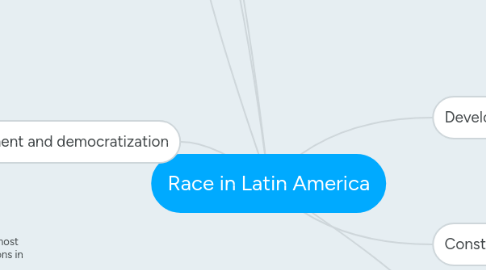Race in Latin America
par Ronald Carvajal


1. Brazil, contemporary racial politics
1.1. Post war Brazilian racial theory
1.2. UNESCO studies
1.2.1. Racial revisionism full of insights but had significant limitations
1.3. Racial formation theory, racial inequalities, racial difference
2. Florestan Fernandes' view, Brazil's racial dilemma is a result of survival from the days of slavery
2.1. Fernandes' work probably remains the most comprehensive sociology of race relations in Brazil's development
2.2. Came into conflict with capitalist development and would be liquidated by a transition to modernity
2.3. Greatness of his work lies in his recognition of the centrality of race in Brazil's development, not only in the past or even the present, but also in the future.
2.4. Solution is integration
3. Black movement and democratization
3.1. Human right's groups, women's groups, residential associations and, very importantly in the Brazilian context (CEB's) Ecclesiastical base committees.
3.1.1. Recreated civil society by expanding the terrrain of politics
3.2. Brazilian blacks inbolved int he quest for democracy
3.2.1. By the later 1970's consolidation of democratic opposition politics, a new generation of black movement organizations began to emerge.
